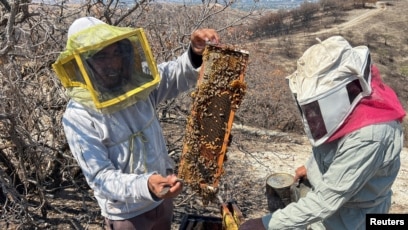In the arid northern state of Chihuahua, Mexico, a relentless drought is pushing both farmers and the natural environment to the brink. As rain clouds remain elusive, the land grows parched, and the region’s once-dependable water sources—dams, wells, and lagoons—are drying up.
Chihuahua, Mexico’s largest state, is no stranger to dry or semi-dry conditions. However, the past few years have brought unprecedented low rainfall, leaving the state grappling with severe water shortages. Near the town of Buenaventura, the Las Lajas dam, once a lifeline for local agriculture, now lies almost barren. The scant water left is a graveyard for dead fish, a grim testament to the drought’s severity.
“The situation is dire,” laments Rogelio Pacheco Flores, the municipal president of Buenaventura. “This dam is nearly empty. We are witnessing complete devastation. It feels as though nature is punishing us.”
The drought’s impact is acutely felt by local farmers. Livestock, desperate for relief, wade into the mud where water once stood, but the diminished dam has left farmers struggling to irrigate their crops. With wells running dry, many have abandoned planting altogether or are forced to divert what little water remains to save established walnut groves.
“The water levels in our wells are dropping fast,” says Angel Rueda Solorio, a farmer who has watched his land turn to dust. “We can’t plant anymore because there’s no water. It’s been two years now without enough rain.”
The drought is not only decimating crops; it is also wreaking havoc on the region’s beekeeping industry. As wildflowers wither, bees are left with fewer sources of pollen, pushing them to forage in pesticide-laden fields where they often meet a deadly fate.
“There’s almost no vegetation left,” reports Adan Rascon Ramos, a beekeeper with three decades of experience. “The bees are dying in large numbers because of the drought and the herbicides in the fields.”
The water crisis has also dried up the local tourism industry. The once-thriving fishing and boating activities at the dam are now a shadow of their former selves. Tourists who once flocked to the area for boat tours and leisurely walks around the dam have dwindled.
“I’ve been here a year, and I’ve seen how visitor numbers have dropped since last year,” says Daniel Alberto Rubi, a fisherman who also offers boat tours. “This year, the dam is only at about 20% capacity, and it keeps getting worse.”
As the drought drags on, residents of Chihuahua can only hope that rain will return and bring relief to a region on the edge of collapse.




